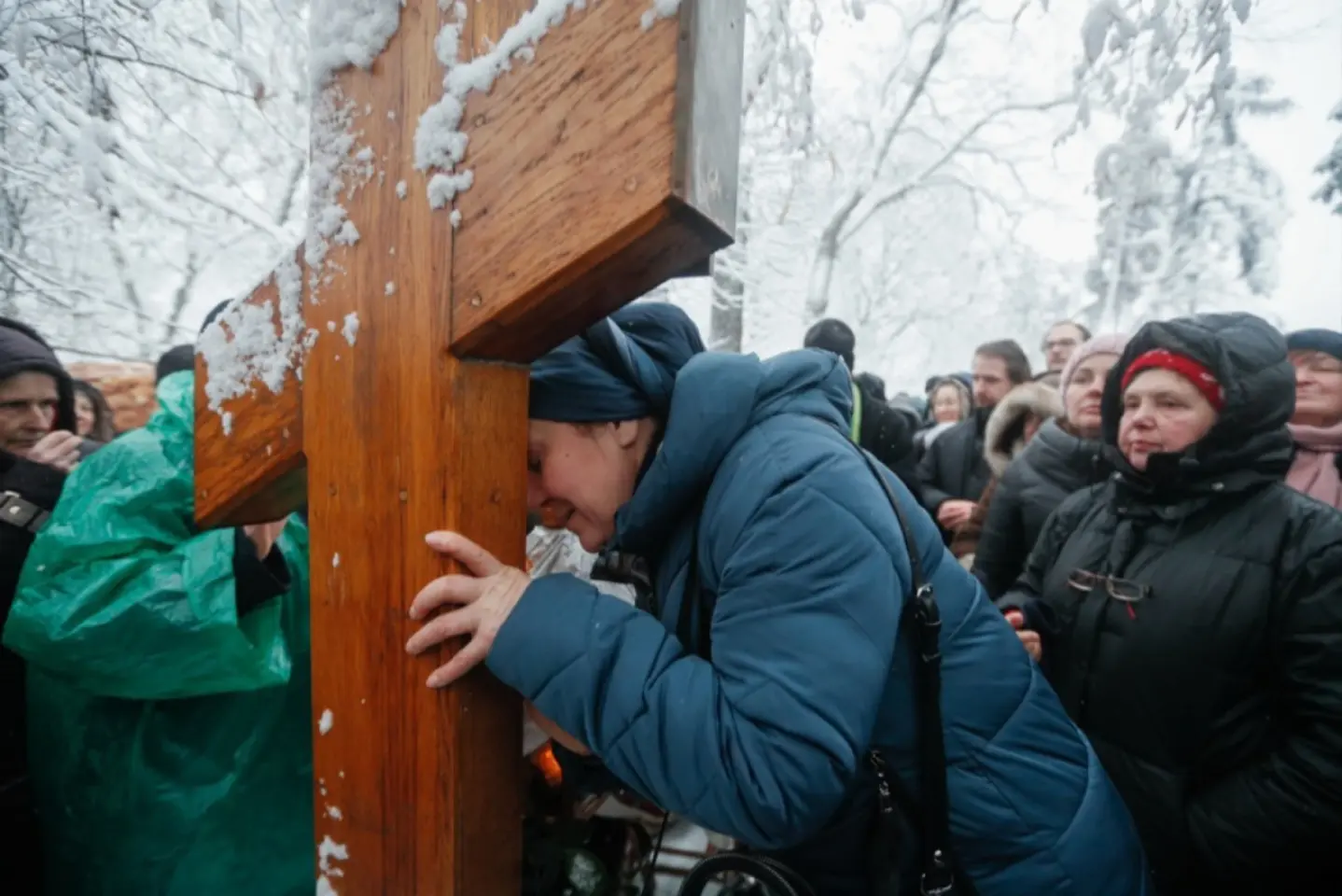
On 17 June, a violent conflict broke out in Chernivtsi, at the Cathedral of the Descent of the Holy Spirit, an important place of worship for the Romanian community in Ukraine, where some of the religious services were held in Romanian. The conflict was over who gets to control the cathedral, which was taken over by the Orthodox Church of Ukraine (OCU), but is still claimed by the Ukrainian Orthodox Church (UOC), which had held the place of worship until this year. The Ukrainian Orthodox Church is part of the Moscow Patriarchate, although it claims to have severed ties with it after the large-scale invasion of 2022. The Orthodox Church of Ukraine was established in 2018 as an autocephalous church (recognized as such in 2019 by the Ecumenical Patriarchate of Constantinople, but not by the Moscow Patriarchate). This church is also ‘preferred’ by the Ukrainian state, given that the Moscow Patriarchate is closely linked to the Kremlin regime, which it supports ideologically, and has even expressed its support for Russia's war.
The conflict at the Cathedral of the Descent of the Holy Spirit has occurred against the backdrop of several disputes related to churches in Northern Bukovina. The issue has been taken up for years and amplified by pro-Russian propaganda, but also by Romanian sovereignists who have been eager to show that the Church issue highlights the oppressive nature of the Ukrainian state and the persecution of the Romanian community. Like the ‘Bystroye issue’, the Ukrainian minority law, the grain crisis, the exodus of Ukrainian refugees and other such issues, the church issue has been used to undermine support for Ukraine in the context of Russia’s aggression.
Often, misinformation and false narratives start from a grain of truth to make them seem more credible. This is also the case with the conflict surrounding the Church and the specific case of the cathedral in Chernivtsi: Veridica* found, on the ground, that the truth lies somewhere in between.
The Romanian parishes in the Chernivtsi region and the dispute between the Churches of Ukraine. Longhin Jar, the metropolitan bishop who promotes narratives similar to those of Russian propaganda
At the beginning of the year, several parishes in the Chernivtsi region switched from the historically Moscow-affiliated church (UOC) to the Orthodox Church of Ukraine (OCU). Ukrainian law prohibits religious organizations linked to Russia, and the former is in the process of severing canonical ties with churches with such connections. On the other hand, the UOC accuses the OCU parishioners of violence, and its clergy and parishioners say they fear losing their religious and cultural identity and accuse the state of politicizing religion and using it as a tool. Most of the Romanian-speaking believers in the Chernivtsi region are attached to the UOC, which attracts them with services held in their native language.
Among the UOC hierarchs in the Chernivtsi region, the most famous is Longhin Jar, also known as Mihai Jar, Metropolitan bishop of Bănceni. He was the abbot of the Bănceni Monastery, which he founded and led for almost three decades. Longhin Jar's popularity is due, at least in part, to his involvement in various social activities. For example, he is the founder and coordinator of an important children's shelter in the Chernivtsi region, which provides care and support for sick children and those from disadvantaged backgrounds. In 2008, for his outstanding contributions in the social and religious fields, he was awarded the title of ‘Hero of Ukraine’ by President Viktor Yushchenko.
However, Longhin Jar is also the most controversial hierarch in the Chernivtsi region. He has been accused by some observers and politicians of having ties to pro-Russian forces and promoting Moscow's influence in the Ukrainian Orthodox Church. Some of his public statements in recent years have generated controversy. For example, he called the Ukrainian authorities ‘servants of Satan’ and claimed that “ the cursed Europe ” was to blame for the war. He refused to bless the soldiers leaving for the front to fight against Russia. Another controversial episode involving Longhin Jar took place in early 2024, when he was admitted to hospital with bruises on his face, which he claimed he had sustained after being beaten and falling to the ground. However, OCU supporters say that this is a lie and that, in reality, Longhin Jar fell after feeling ill, and the bruises were caused by broken blood vessels. Local authorities stated at the time that they had not received any complaints from the priest
The fact that Longhin Jar sets himself up as a defender of the interests of the Romanian community in the Chernivtsi region does not mean, however, he also promotes closer ties with Romania and its religious structures: the metropolitan bishop is also known for his opposition to the rapprochement of churches in villages with Romanian populations with the Romanian Orthodox Church, which in recent years has shown a growing interest in returning to the area from which it was driven out by the Soviets.
Priests, supporters and parishioners from both sides were involved in the incidents on 17 June, and doctors, police officers and priests were hospitalized as a result of the violence. According to press reports at the time, as well as witnesses with whom Veridica spoke afterwards, against the backdrop of the UOC clergy's refusal to surrender the cathedral, several dozen young OCU supporters entered the cathedral with their faces covered and beat and chased away the UOC priests who were there, effectively trying to take control of the cathedral by force. Meanwhile, several hundred UOC parishioners, including ethnic Romanians, had gathered in front of the cathedral. The local authorities were expecting a violent conflict – transport had been restricted that day, and checkpoints had been set up at the entrances to the city to stop UOC supporters. In fact, the latter later accused the police present at the scene of favoring the OCU supporters.
However, the Ukrainian Orthodox Church parishioners could not be stopped: they broke down the fences around the cathedral, entered it and, in effect, reclaimed it – but the Orthodox Church of Ukraine continues to claim that, legally, the cathedral belongs to it, so those from the UOC are there illegally.
The violence at the cathedral was fueled by both sides
I arrived in the Chernivtsi region a few days after the violence between the parishioners of the two churches. I wanted to take the pulse of the street, but people gave me the impression that they were reluctant to talk to the press, becoming less communicative when they saw the camera and microphone. They all directed me to the cathedral.
So I went to the Cathedral of the Descent of the Holy Spirit in Chernivtsi. There, a man with a small tattoo on his left hand (similar to those made in the army or in prisons during the Soviet era) was filtering the people who were entering.

Two priests appeared at the gate, and I showed them my press accreditation. One of them stepped aside to make a phone call, then came back and told me that I would not be allowed to enter the cathedral grounds, without giving any further explanation, then hurried away. During the 15 minutes I waited at the cathedral gates, parishioners entered and exited past the tattooed guard. An elderly lady walked past me, muttering insults at me. Another parishioner with a headscarf took out her phone and started video-recording me, paradoxically unhappy that I was filming there. That was not the only time I felt that attempts were being made to intimidate me. From online threats to emotional manipulation, efforts were made to influence both the editorial direction of this material and the information presented here. It seems that I was not the only one in this situation: several local sources told me, under the protection of anonymity, that such pressure had also been exerted on other media representatives. These sources stated that, in some cases, intimidation takes the form of physical violence or vandalism.
By the next day, my journalistic ‘rebellion’ had quickly gone viral in the community; the priests and others from the UOC community I spoke to were aware of what had happened the day before, telling me that my entry had been refused because there were fears about people coming from outside, given the hooliganism a few days earlier, which had resulted in two UOC priests being hospitalized.
In one of the hospital wards, I meet Father Vitalie, lying on a bed. His face was covered in bruises and injuries, some of which required stitches. Father Vitalie, who didn’t speak Romanian, told me that I was the only journalist who had come to see him and was glad to be able to talk about what had happened. On the day of the conflict, a close friend called him, telling him that some people had come to take control of the cathedral. "I got dressed and went to check what was happening. I started a live broadcast on the page, and as I was approaching the cathedral fence, I saw three boys standing there," Father Vitalie told me, pausing frequently, visibly exhausted.
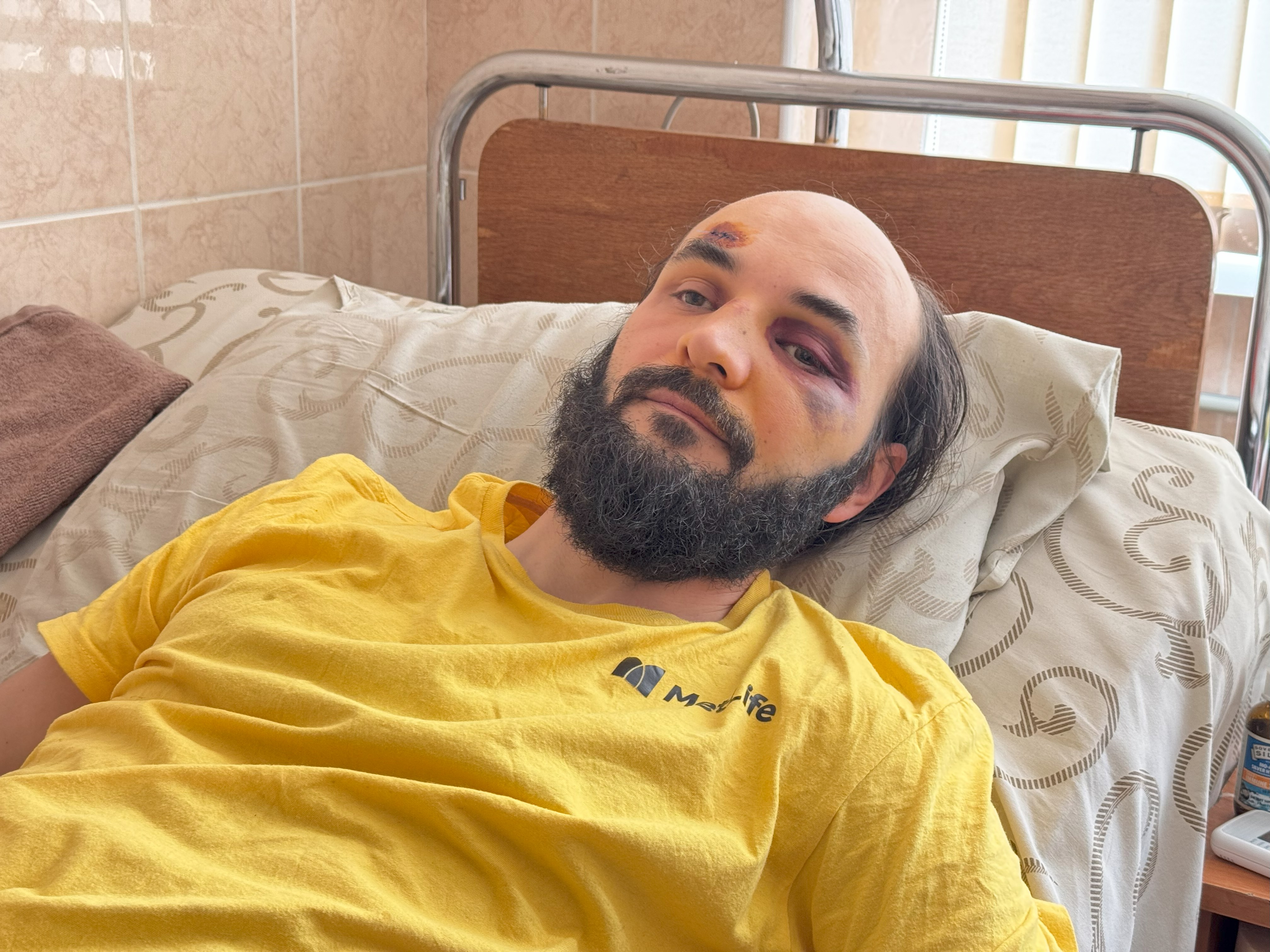
Father Vitalie, on a hospital bed. @Alex Craiu
"I started filming them live, so it would be clear who they were. One of the boys came up to me and said, “I'm taking your phone now.” I replied, “Take it.” He smiled and started jumping over the fence. I started running.
He jumped over the fence and started chasing me. Then I felt a blow to my head. I fell to the ground. Meanwhile, two boys started hitting me. I fell down and was kicked.”
According to the priest's statements, the police response was weak: they only took action after the women started screaming, shocked by what had happened there. However, the three individuals who assaulted him were later seen walking freely in the cathedral courtyard. “I understand that they took all those steps just to give the impression that they were doing something, at the women's request, to justify their presence.”
From the footage we saw, the three individuals were being searched by the police, but the priest's memory, according to his statements, had become blurred due to the blows he had received. At present, it is unclear whether the attackers were arrested, although there is information that they were put into police vans. UOC parishioners accused the police of creating a corridor around the attackers, appearing to protect them. However, some witnesses we spoke to believe that the authorities protected the attackers to prevent an even bloodier escalation of the conflict, as they risked being lynched. Father Pavel (UOC) has a different opinion:
“The state authorities facilitated, they were on the side of the 50 young people. And I was also assaulted by the police, even though I didn't provoke anyone, I didn't shout anything against the police or anything. I was in that crowd, where a policeman saw something and hit me.”
The Chernivtsi police did not immediately respond to Veridica's request for comment as an internal investigation is ongoing.
While the consequences of this violence were documented on video and verified by Veridica on the ground, UOC parishioners have failed to mention that members of their own camp were also seen participating in the violence.

For example, a video received by Veridica shows several men bringing a OCU supporter to a bench, hands tied behind his back. He is then slammed against the bench and, after he falls, two men take turns hitting him while four others hold him down and record him on camera. The police do not intervene, as their forces are concentrated at the back, where the violence is escalating and parishioners are starting to throw yoghurt bottles at the law enforcement officers.
“Moscow's long arm” stirs up trouble in Chernivtsi
"In February of this year, believers in the city of Chernivtsi, especially those from the Cathedral of the Ascension of the Holy Spirit, voted to leave the jurisdiction of the Russian Orthodox Church and wrote a request to be accepted into the jurisdiction of the Orthodox Church of Ukraine. The meeting was attended by many believers, signatures were recorded, minutes were drawn up, and afterwards the church was legally registered with the state authorities. So, the community of the Church of the Ascension of the Holy Spirit belongs entirely to the Orthodox Church of Ukraine," said Bishop Theognost of the OCU at a press conference in Chernivtsi, which Veridica also attended.
The hierarch states that the OCU does not wish to occupy churches by force, but to defend them legally and peacefully. He argues that the state and authorities must ensure compliance with the law to protect believers, avoiding violence and acting only through justice. He also warns that those who provoke conflict and destabilize are motivated by external interests and propaganda, not by a desire for unity. He urges calm and asks people not to allow themselves to be manipulated.
In the Romanian-speaking community in Chernivtsi, such transfers, although legal, are stirring up already troubled waters: there is a fear that these measures are aimed at stifling the identity of the minorities living in the region. Therefore, where UOC priests refuse to switch to OCU, parishioners tend to rally around them. However, the situation is not widespread – there are parishes that have switched from one Church to another peacefully, as was the case in the village of Boian. “No one is chasing the priests away. Why didn't anyone kick out our priest Vasile, why didn't they change the language in the church?” a local woman told me, somewhere on the streets of the village, not far from the church she invited me to visit. "The influence comes from Bănceni, from Longhin Jar. He has never wanted to side with Ukraine, he has always been with Russia. He influences everyone." The woman told me that there’s still a strong Russian influence in the UOC, which is why, in her opinion, the priests do not want to join the autocephalous structure, not considered canonical by the UOC (and, obviously, by Moscow either), despite the fact that it has been recognized by Constantinople.
In an interview with Veridica, Bishop Theognost stated that these ideas are fueled by Russia and its patriarchy. He added that the situation of Romanian churches and believers and many of the incidents are presented in a distorted manner because the media is allegedly manipulated:
"It is very important for the media and journalists to analyze all these events objectively and not be influenced by manipulative attempts and incomplete information, because this incites hatred and division between peoples, between Ukraine and Romania," says the bishop, who suggests that Russian propaganda is using the events here to distort the truth by promoting false narratives.
A less publicized case, which did not reach the Romanian press, is a conflict similar to the one in Chernivtsi, which took place in May this year, on a much smaller scale in the village of Ust-Putyla in the same Chernivtsi region. There, the village church officially switched to the new autocephalous structure approved by Kyiv. On the first night after the takeover, which the OCU claims was legal and supported by the community, UOC parishioners came armed with axes and hammers, determined to break down the church door.
‘Father Dumitru (UOC) just looked, raised his arm and gave the order to the armed gang, saying “Cut everything and everyone,”’ Mykola, 62, tells me. He was caught up in the altercation that night, at the end of which he ended up in hospital with a head injury and a broken nose. Frowning and raising his voice, he tells me how he was hit with a metal object when those outside the church managed to push open the door that Mykola was holding shut with his own hands. "They beat me, the priest and everyone, and they hit me. At 62 years old, I have never seen such cynicism."
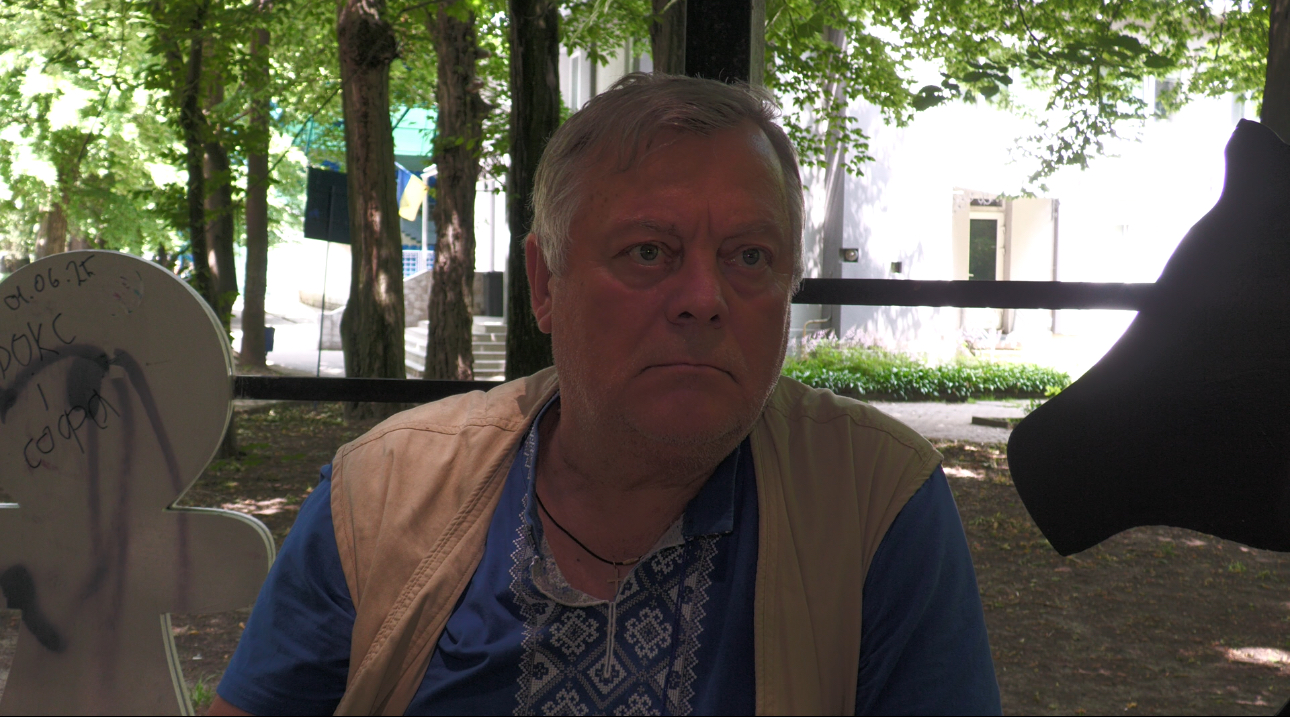
Mykola. @Alex Craiu
In the footage we saw, a large group of villagers armed with metal objects broke down the church door, at which point the group began shouting, joyfully marking the moment. The previous morning, a UOC supporter had brought what appeared to be a potentially lethal grenade, threatening to detonate it. It was later claimed that the grenade was a toy.
According to Edgar, an ethnic Romanian blogger I met in Chernivtsi, such attacks do not make it into the international press because the influence of church figures with possible connections to Russia is often strong enough here in a region where both sides accuse the local authorities of abuse and corruption.
"Melety (editor's note: the Metropolitan bishop of the Ukrainian Orthodox Church in Chernivtsi) has a Russian passport. The brothers of priest Covalciuc from Storozhynets are now in Russia, raising money for the Russian army. Who supports the priests of the Ukrainian Orthodox Church? Deputy Dmitruc, who fled across the border and gave an interview to Russian correspondents. Or businessman (Vadim) Novinsky, who in 2023, when the war began, was serving in a Russian church in Germany," Edgar argues, hypothesizing about the links between the UOC and Russia.
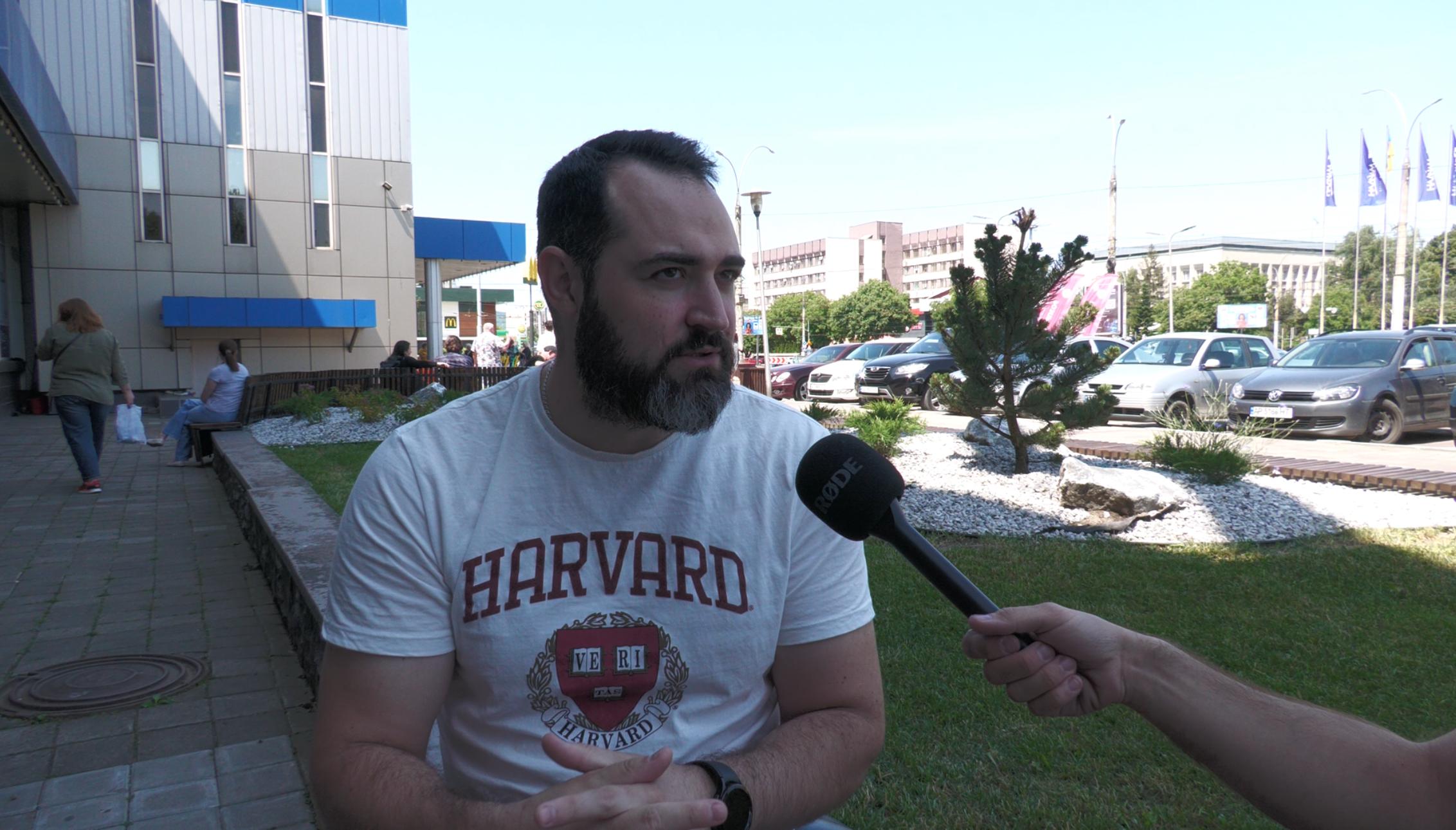
Edgar. @Alex Craiu
Pavel, a young from the village of Văncicăuți whom I meet in Chernivtsi, believes that Moscow is trying to use disputes over churches to fuel inter-ethnic conflict:
"The issue of national minorities is not about religion. This manipulation is a Russian technique, applied in the Donetsk and Lugansk regions, based on language and identity. But in general, the people living in our region have absolutely no problems with language; here, people speak the language they want. We, in our region, are very free, we have our own identity and at the same time we understand that we live in Ukraine, which has its own laws and dictates how society should behave in a state of war."
Pavel feels that this conflict is based on a misunderstanding, namely that with the arrival of the OCU, Romanians will lose their jobs in their mother tongue. He tells us that, in his opinion, people who are unsure about joining the new structure are the easiest to manipulate: “I believe that when people don't have a personal opinion, it will be shaped by those who can manipulate them. They have been victims of much manipulation, unable to verify where justice lies.”
Ukrainians say that they only have a problem with the Russians. However, data from the ground show that abuses against Romanians are also being committed in the name of "national security."
The narrative about the persecution of the Ukrainian Orthodox Church has long been promoted by Russian propaganda (see, for example, fake news on this topic debunked by Veridica here and here), especially since it fits perfectly with the broader thesis of the assault on Orthodoxy and the Orthodox world, whose defender is, of course, Russia. Obviously, against this backdrop, the Russians could not have missed a topic such as that concerning the churches in the Chernivtsi region, just as the Romanian sovereignists who address narratives similar to those promoted by Moscow.
However, the situation is not quite as the Ukrainian side presents it. Both the Orthodox Church of Ukraine and the civil administration and politicians (in Kyiv and at the regional level) have shown excessive zeal and even intransigence in the campaign to expand the influence of the OCU. This can also be seen in the OCU’s relationship with the Romanian Orthodox Church, which, unlike the UOC, cannot be accused of being subordinate to Moscow.
In his interview with Veridica, Bishop Theognost also addressed the relationship between the Orthodox Church of Ukraine and the Romanian Orthodox Church, describing it in optimistic terms:
"First of all, it must be explained that our Church has autonomy and recognition, being completely canonical and legitimate. Also, in Ukraine, discussions and contacts are taking place between the Orthodox Church of Ukraine and the Romanian Patriarchate, both at the state level and at the church level. The secretaries of the Synods of both Churches are in dialogue to advance the process of recognition of the Orthodox Church of Ukraine (OCU). We believe that soon, the Romanian Church will officially recognize the autocephaly, which will strengthen its canonical status and full autonomy."
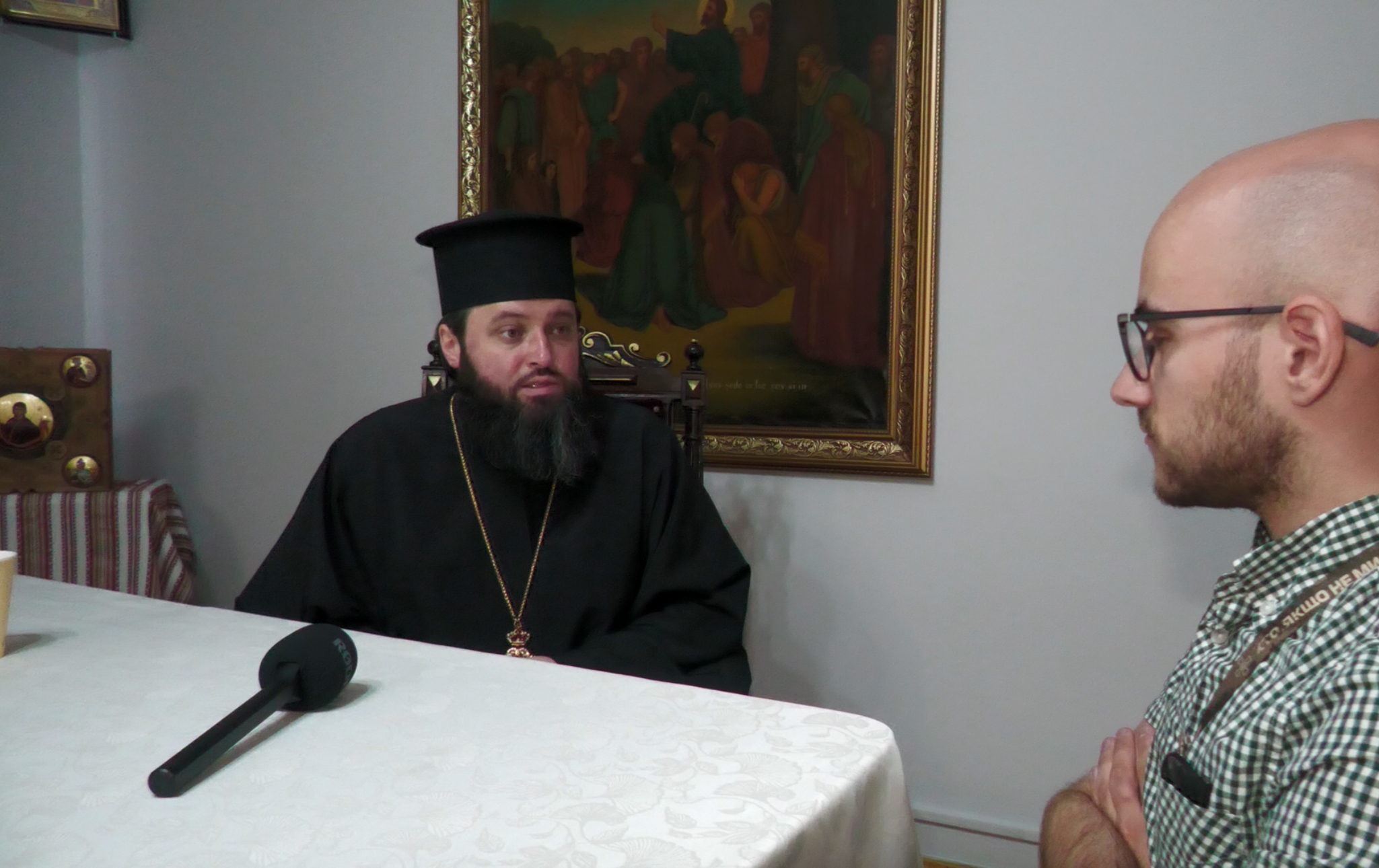
Bishop Theognost. @Alex Craiu
Theognost also assured that the OCU is making efforts to integrate the Romanian community in Ukraine and mentioned, in this regard, the vicariate for ethnic Romanians established in 2019, which aims to preserve Romanian culture, traditions and language during religious services. According to the Ukrainian side, its status is similar to that of the vicariate for Ukrainian believers in Romania . However, the initiative has not been very successful, and most priests in regions with large Romanian communities categorically refuse to switch to the OCU.
Bishop Theognost's optimism regarding relations with the Romanian Patriarchate is contradicted by the Romanian Orthodox Church itself, which, in a press statement released just a few days after Veridica's discussion with the Ukrainian hierarch, suggested that it does not intend to recognize the Orthodox Church of Ukraine anytime soon and highlighted the fears of the Romanians in Ukraine that, by switching to the OCU, they would lose their identity. Subsequently, the Synod of the Romanian Orthodox Church also complained that Ukraine does not allow Romanian communities on its territory to join the Romanian Patriarchate.
Parishioners from four Romanian villages in the Chernivtsi region voted for their churches to be transferred to the jurisdiction of the Romanian Orthodox Church, and the parishes prepared documents to this effect, which were also seen by Veridica. Three of those villages even sent the documents. However, the three parishes subsequently withdrew their requests, and the fourth did not send them. This ‘change of heart’ came about as a result of pressure from the Ukrainian authorities and, in particular, the Ukrainian Security Service (SBU). Local sources told me, on condition of anonymity because they feared the consequences, that some mayors were contacted directly by the SBU, which asked them to force Romanian priests to withdraw their applications to join the Romanian Orthodox Church from the regional administration. In the event of non-cooperation, army raids would follow, resulting in men who were fit for military service but had not registered with the military (which is a violation of the law) being drafted into the army, with the risk of being sent to the front.
Kyiv insists that, in the context of war, any ties with Russia are a potential threat to Ukraine's national security; this perspective may explain its attitude towards the Ukrainian Orthodox Church and its suspicions of it. The same context may also explain other measures taken by Kyiv, from protecting the information space from Russian and pro-Russian media to efforts to de-Russify and strengthen the Ukrainian language and identity.
The measures adopted by Ukraine sometimes have unpopular implications for certain minorities, even though those minorities are neither the target nor the reason for such measures. It’s also true that historical experience justifies certain suspicions on the part of these minorities, which throughout history have been the target of persecution and discrimination and have gone through many periods when their natural desire to protect and express their identity was viewed with hostility by the center—whether that center was in Moscow or Kyiv.
What is happening now in Chernivtsi does not appear to be a conflict between Ukrainians and ethnic minorities explicitly, but rather one against the supporters of Russia—or at least that is the position of the Ukrainian side. It is also clear that religious disputes here are being used by propaganda to fuel the idea that Ukraine is currently hostile toward ethnic Romanians.
However, beyond Russian influences and the necessities dictated by war, there is a legitimate question: where is the fine line between defending national security at all costs and certain excesses committed in its name?
*Marin Gherman also contributed to this story.


